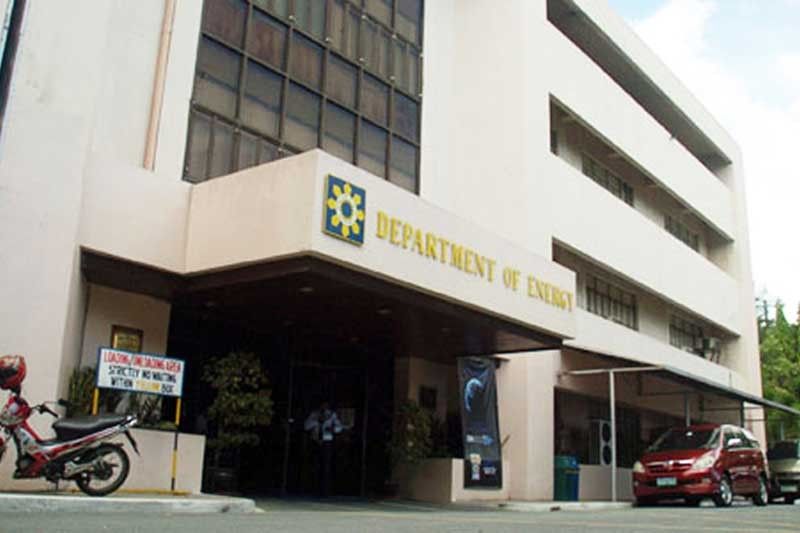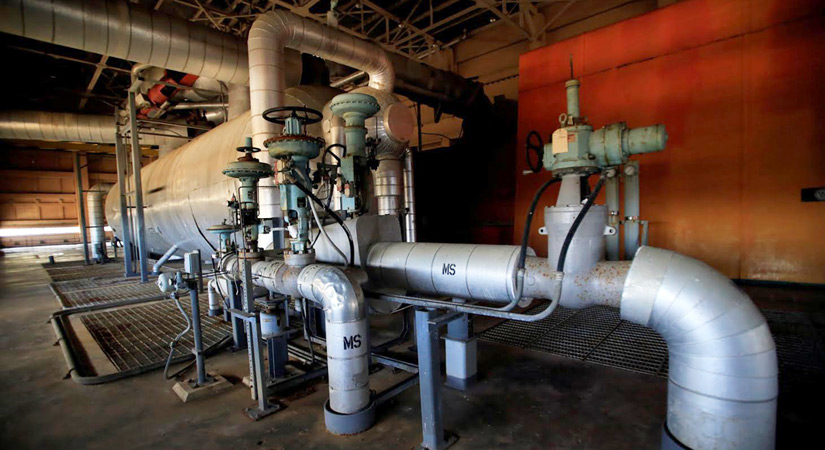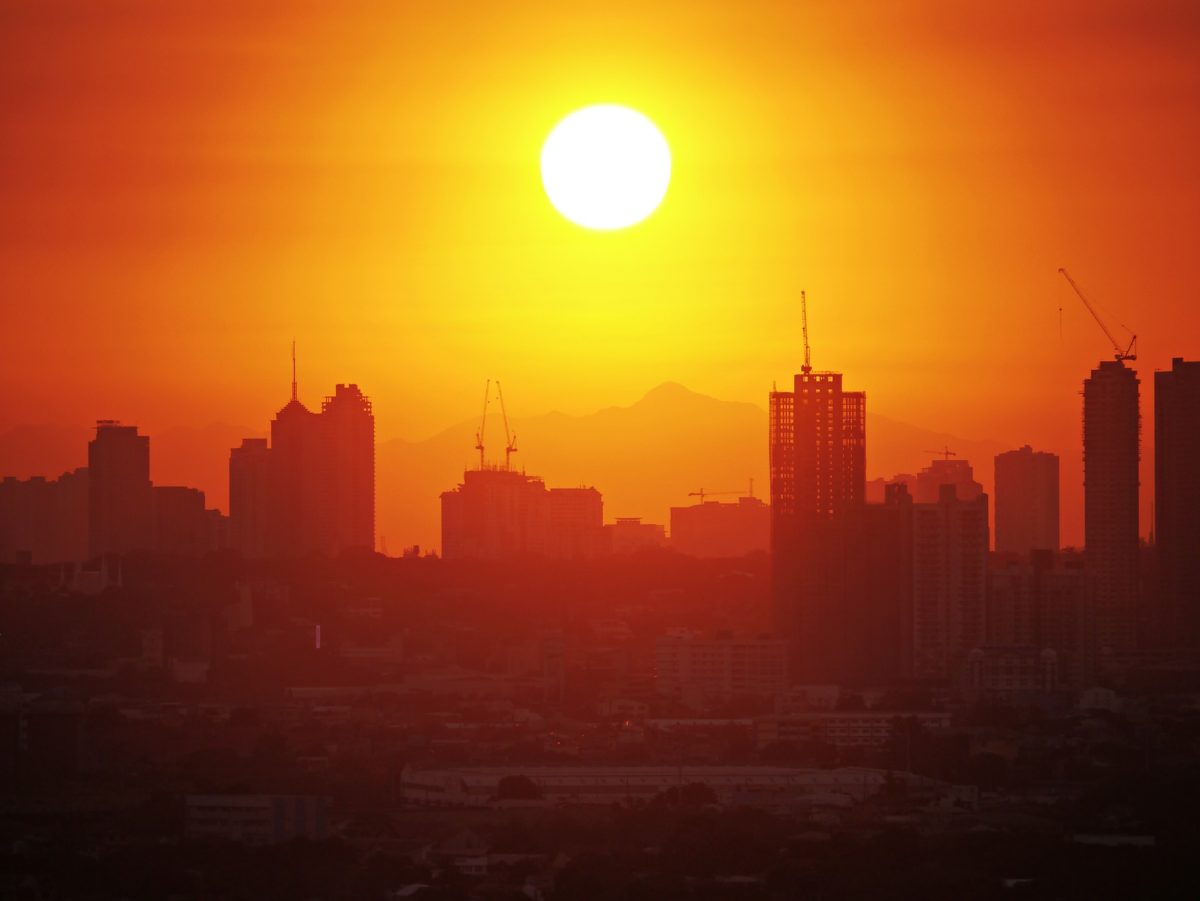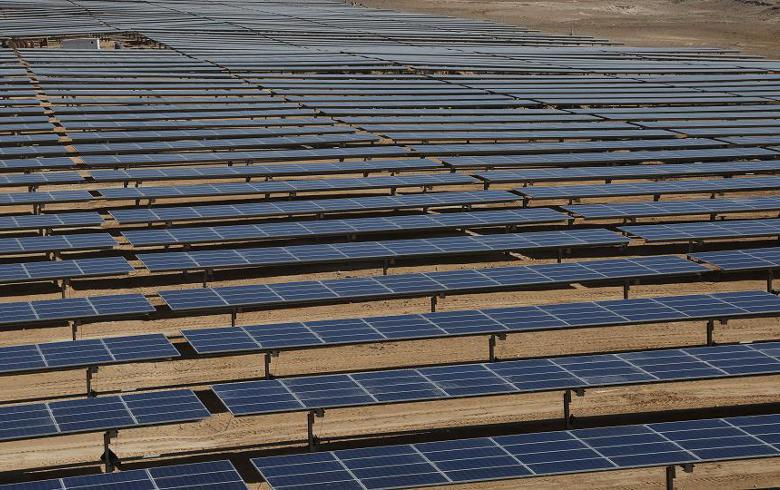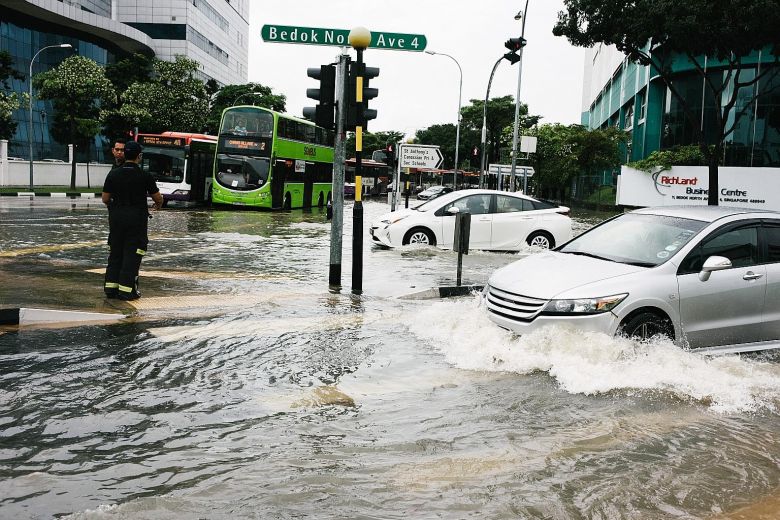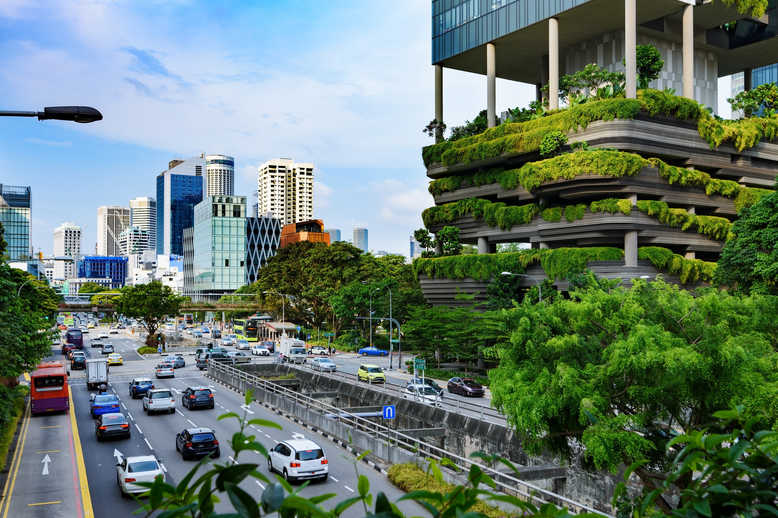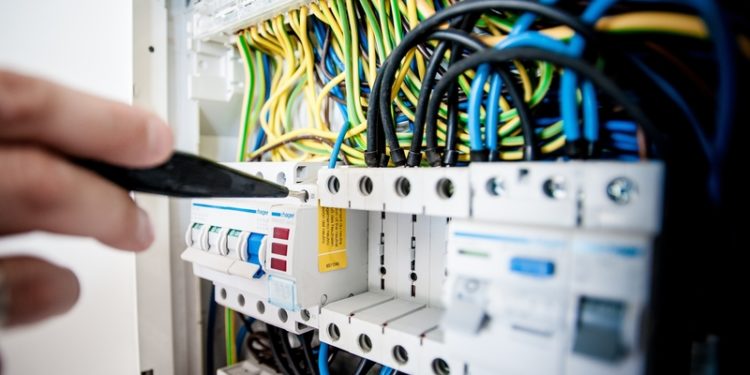As Singapore seeks to move away from its dependence on gas towards renewable energy sources like solar, the transport sector is similarly undergoing the same shift towards alternative fuel sources. Alongside the increasing electrification in the transport sector, there has been renewed interest in the use of Hydrogen fuel cells vehicles, a move which may well form part of a holistic national strategy to decarbonise.
Developments in Singapore
Singapore is investing heavily into renewable energy sources to shift the nation’s reliance to sustainable energy. Particularly in the automotive sector, electric vehicles powered by lithium-ion batteries (“EV”) are catching on thanks to increased Government investment into EV infrastructure and subsidies (For more information about EVs in Singapore, please refer to our article here )
On the other hand, interest in Hydrogen Fuel-Cell Vehicles (“HFCV”) has been slow over the years and HFCV for consumers have not been publicly deployed yet, despite Singapore being a pioneer in these new technologies and having started exploring fuel cell energy sources as early as 2001. In 2004, it was one of the five cities selected by Daimler Chrysler to test bed and run a fleet of six HFCV units on the roads. And in 2010, the first HFCV bus was deployed to ferry athletes during the Youth Olympic Games hosted by Singapore, but the prohibitive cost of Hydrogen led to the bus being retired and eventually disposed of.
Nonetheless, there are signs that HFCVs are picking up traction again. Recently in November 2018, Hyundai showcased its Nexo, the next-generation HFCV, in Singapore; and Strides, the private-hire subsidiary of SMRT Taxis (the taxi operations arm of Singapore’s public transport operator), has plans
to collaborate with Toyota Motors to roll out the first HFCVs in Singapore.
Regulations for the growth of HFCVs
Supply-side
Currently, there are no laws or regulations specific to the use of Hydrogen fuel cells in Singapore. Although Hydrogen is the lightest gas in the Universe and has several advantages over other fuels, it is considered a highly “flammable material” under law and thus licences are required for its storage, keeping, import and transportation. Further, regulations in respect of how it should be dealt with, for example how it should be dispensed, transported, imported and the premises it should be stored in are relatively generic, according to the Fire Safety (Petroleum and Flammable Materials) Regulations). These regulations do not substantially differ from regulations currently being applied to the handling of petroleum, though the Singapore Civil Defence Force (the authority in Singapore regulating the import, transport and storage of petroleum and flammable materials) provides detailed fire safety requirements for petroleum service stations. Given that the purpose of these fire safety regulations is to ensure the safe handling of Hydrogen as opposed to being used to promote economic objectives, it is unlikely that such regulations may be relaxed as supply-side measures to encourage HFCV growth.
Elsewhere, in Europe, 23 European countries have collaborated on the “HyLAW EU Project” that aims to identify and remove legal and administrative barriers to the deployment of Hydrogen fuel cells and Hydrogen applications. One of the findings, in relation to the deployment of HFCVs, is that most European countries lack regulations specific to HFCVs and Hydrogen refuelling stations (“HRS”), which may cause HRS operators to face uncertainty when obtaining permits or face unreasonably high requirements from authorities who wish to be extra cautious in interpreting general regulations. A similar result may be extrapolated in Singapore, given the lack of clear regulatory guidance, which may necessitate for the implementation of detailed guidance specific to HFCV and HFCV-related infrastructure for example, safety standards relating to the use and deployment of HFCV and building and safety codes relating to the maintenance and construction of HRS.
Nonetheless, some Asian governments appear to be similarly supportive of the Hydrogen economy. For instance, the South Korean Government announced plans in 2018 to support the growth of the Hydrogen economy through, amongst others, establishing a reliable safety management system from the production to storage, transportation and utilization of Hydrogen. This would be enacted in South Korea through a special regulation, tentatively known as the Hydrogen Economy Act, wherein safety standards for HRS will be imposed in accordance with international standards1. South Korea also announced that it will streamline regulations governing HRS, and has implemented a regulatory sandbox for constructing HRS in city centres to raise the number of HRS from 15 in 2018 to 310 by 2022.
Ultimately, implementing HFCV-specific regulations will provide a clear regulatory platform for potential market players and reduces the potential legal risks they may face in investing in Singapore’s Hydrogen market, while also positively signalling the Government’s serious intent in developing the Hydrogen economy in Singapore. However, HFCV-specific regulations will likely only be implemented if there is a market for HFCVs in the first place otherwise the laws would be redundant. Thus, regulatory authorities should endeavour to simultaneously increase the demand for HFCVs, to ensure that such HFCV regulations are implemented in tandem with the growth of the HFCV industry in Singapore.
Demand Side
To support the supply-side initiatives, demand-side regulations and incentives to promote the uptake of HFCVs are equally important. In Singapore, buyers of HFCVs can receive a tax rebate of SGD 20,000 under the Vehicle Emissions Scheme (the nation’s tax structure for car purchase), which may incentivize them to purchase HFCVs. However, HFCVs are not currently available in Singapore for mass consumption, which explains why there are no HFCVs that ply Singapore’s roads.
Notably, a huge stumbling block would be the high cost of Hydrogen and fuel cells, which also needs to be tackled. The cost of importing Hydrogen in 2025 is estimated to be twice the current price of imported Liquefied Natural Gas. And as of now, as HFCVs are much more expensive than internal combustion engine vehicles (“ICEV”) and EVs, car makers offer mainly two options to drive a HFCV: leasing and selling. For instance, Japanese Toyota Mirai, Honda Clarity Fuel Cell and Korean’s Hyundai Nexo Blue sell for USD 58,430, USD 58,490 and USD 59,3452 respectively whereas Chinese EVs can sell for less than USD 10,0003. Subsidies may be implemented, with discretion, to lower the price of HFCVs in Singapore to an equivalent price point as their EV counterparts, or at least at a price point cheaper than ICEVs to encourage the shift to cleaner fuel.
Supporting R&D
Grants and research support may also be enhanced to promote research and development (“R&D”) into the more efficient use and the possible mass deployment of Hydrogen as a fuel, and many countries have committed to already doing this. For example, the United Kingdom Government will provide GBP 20 million for R&D into reducing the cost of Hydrogen production for industry, buildings and transport as part of its Hydrogen Supply programme4. Australia has also announced more than AUD 100 million to support Hydrogen research and pilot projects. The German Government announced in July 2019 that 20 new research laboratories will receive EUR 100 million a year to test Hydrogen technologies, alongside R&D investments by large German companies such as Siemens AG and EON SE5. Additionally, the European Union, through the “Fuel Cells and Hydrogen Joint Undertaking” (a public-private partnership between the European Commission, European industry and research organizations), has a total budget of EUR 1.33 billion to support R&D and demonstration activities in Hydrogen and Fuel Cell activities in Europe.
In Singapore, the Government’s investment into R&D can help set the agenda into further research on the more efficient use of Hydrogen fuels and other ways to surmount the technological hurdles that HFCV deployment may pose, which may help crowd in private investment into Hydrogen fuel cell R&D projects.
Implementing a national strategy
Many national governments have shifted their attention towards the use of HFCVs and Hydrogen fuel in general, fuelled by international climate change commitments and the rising eco-conscience of their electorate. To realize this vision, they have laid out national strategies outlined with goals and step-plans on the mass deployment of Hydrogen fuel cells.
For example, Japan released its Basic Hydrogen Strategy in December 2017, and has very ambitiously targeted to deploy 200,000 HFCVs by the Financial Year 2025 and 800,000 by the Financial Year 2030, to be achieved by following a 3-phase programme6. In France, the Government unveiled its Hydrogen Deployment Plan in June 2018, which aims to put 5,000 HFCVs on the road by 2023 and install 100 charging stations for those vehicles.7 The French Government has also invested EUR 100 million into the deployment of Hydrogen in industry, mobility and energy. Additionally, Australia is slowly getting closer to the implementation of a national Hydrogen strategy, with the release of nine consultation papers to encourage industry and community response8.
Another case is China, which has limited regulation and no national standards on construction of HRS. In a demonstration project for HFCVs conducted between 2003 and 2012, each pilot city had to submit its own standard operating procedures for approval. However, China is increasingly focusing on implementing a Hydrogen economy and has announced in its 13th Five-Year Plan (2016 to 2020) that it expects to setup over 100 HRS by 2020, over 300 by 2025 and over 1,000 by 2030.9
Singapore, though, lags behind but is showing increased interest in this field. The Singapore Government has recently announced plans to explore the use of Hydrogen as a new fuel source, and has opened a consultancy tender in the 3rd quarter of 2019 to examine its feasibility. The results of this study remains to be seen; but if the study demonstrates good potential to deploy Hydrogen as a fuel in Singapore, a national strategy or roadmap is bound to be implemented to promote the uptake of HFCVs and to accelerate the growth of the Hydrogen economy.
Conclusion
In many countries, HFCV deployment is still very much in its infancy and faces stiff competition from its cheaper alternatives the ICEV and even the EV. Nonetheless, regulations and policies may be employed to encourage automotive companies to introduce HFCVs into Singapore’s markets, which may then be substantiated by demand-side policies or regulations to encourage the switch to HFCVs.
With the growing urgency to decarbonise the transport sector, Singapore, like many countries, needs to rely on alternative sources of fuel to power our vehicles and, alongside EVs, HFCVs may prove to be a viable solution.


